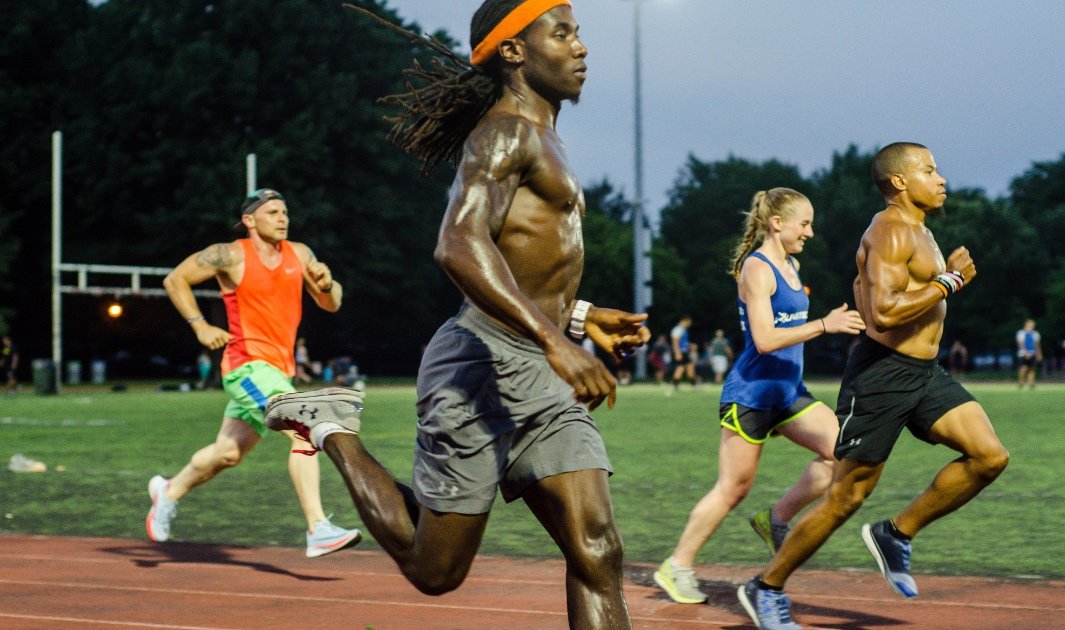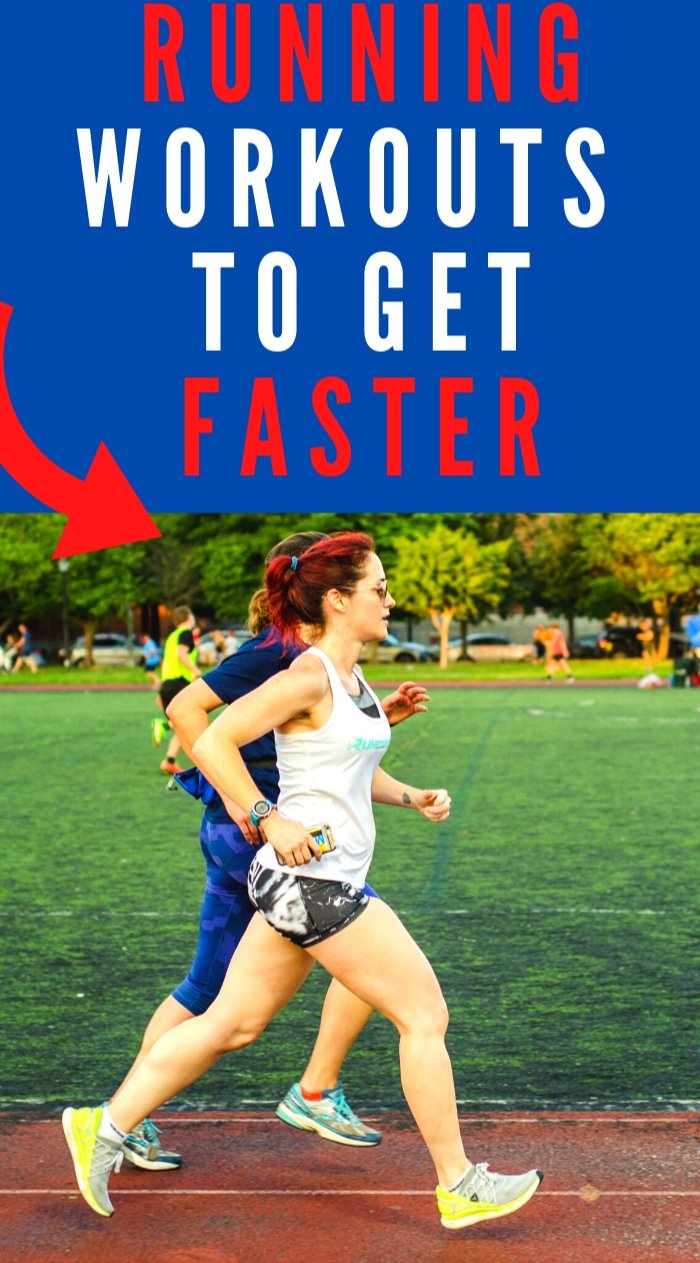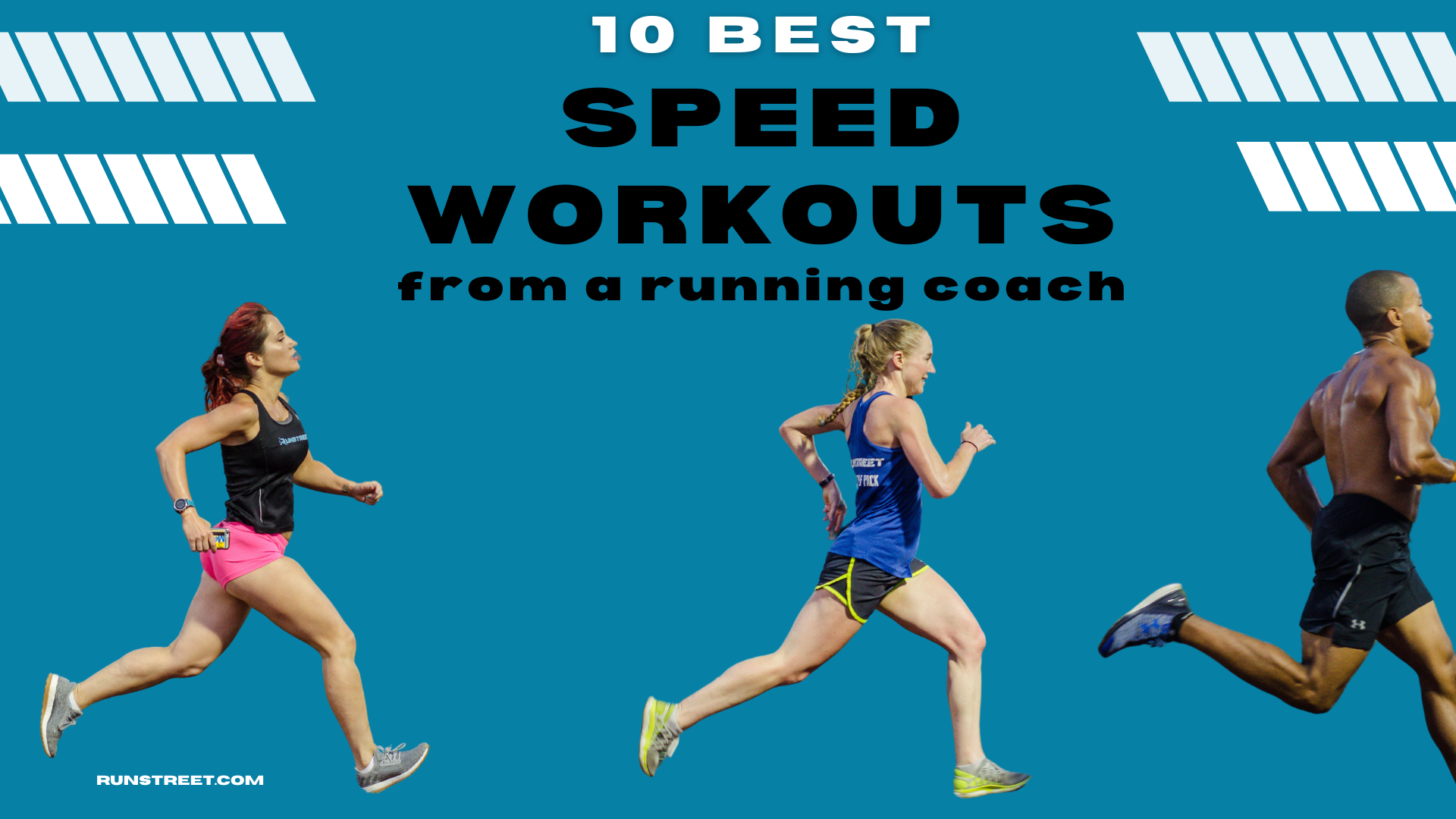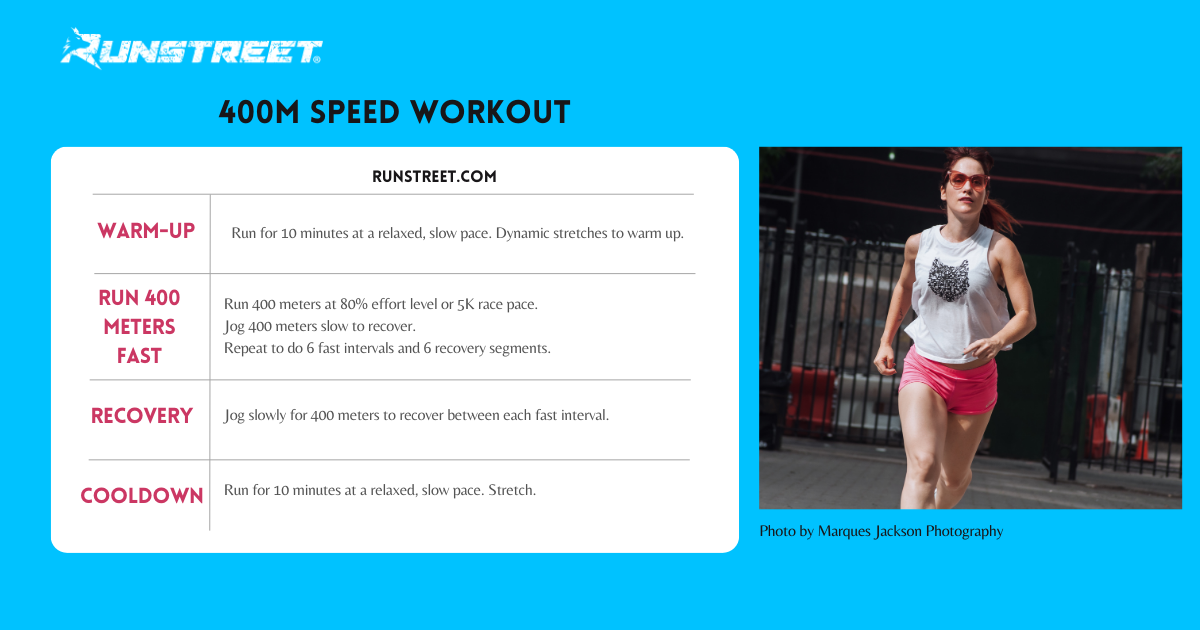5 Running Workouts to Get Faster
These speed workouts will help you become a faster runner. Photos by Marques Jackson Photography.
By Marnie Kunz,
Certified run coach and fitness trainer
If you feel like you’re in a slow running rut, these 5 running workouts to get faster will help you pick up your pace. Whether you’re nostalgic for the days when you were a top runner in your age group or you are just tired of feeling slow on your runs, these running workouts will give you a boost of speed training to improve your splits. Speed workouts are great for all levels of runners and they offer the added benefit of mixing up the monotony of regular base runs. Try adding one or more of these speed running workouts to your running routine to become faster and slay your next race.
Benefits of Speed Workouts
There are many benefits of speed workouts. Speed workouts improve your running efficiency and form and boost your cardiovascular fitness. Speed workouts also help build type II (fast twitch) muscles, which makes you stronger and also gives you a lean, sculpted look. According to the American Council on Exercise, speed workouts are beneficial for non-athletes as well as athletes, as they help combat the muscle loss people experience with aging. Doing regular speed workouts will also help you perform better in races and lower your race times.
Speed workouts also can improve your running form and efficiency, reducing your risk of injury. There are different types of running workouts that can help you get faster, with options for every fitness level. Here is a summary of the benefits of speed workouts:
Improved running speed and faster race times.
Better running efficiency, including increased aerobic capacity and more stamina to run even while fatigued.
Stronger muscles, especially in the lower body.
Burning more calories than slower runs at a conversational pace.
Best Running Workouts to Get Faster
Here are 5 running workouts to get faster:
1. Fartleks
Fartleks - Swedish for “speed play” - are a great beginner-friendly speed workout for runners. They are also not as intense as other speed workouts so they are perfect to transition to speed running if you have not been doing any speed work. Fartleks involve a mix of fast running and relaxed pace running during your workout, with short bursts of speed followed by an easy run pace.
How to Do Fartleks
An easy way to do fartleks is to incorporate them into one of your regular base runs. Warm up as usual and run at your regular relaxed pace effort. During your run, do 10 speed surges. These surges should be short, 1-minute long bursts, with 1 minute of relaxed running between each surge.
Your fast pace should be slightly faster than your 5K race pace, about 90 percent effort level. Add your fartleks workout once a week to your running training program and you’ll be ready for more intense speed work in a month, or if you really love fartleks, you can just extend the bursts to 3 to 5 minutes each as you become used to them.
Related Post: Fartleks Workouts to Help You Run Faster
2. Tempo Runs
Tempo runs are a staple for long-distance runners to add to their speed workout routines. Whether you’re training for a half marathon or marathon or 10K race, tempo runs will make a big difference in improving your running speed. All my best half marathons and marathons were from doing tempo runs once a week.
If you’re wondering what is a tempo run, it is basically a medium to hard training run at faster than your average pace. A tempo run pushes your body and mind to adjust to faster running speeds that it can maintain. Basically, a tempo run trains you to be faster for sustained efforts - like racing. Also called a lactate-threshold run, the tempo run improves your body’s oxygen efficiency while running, and your lactate threshold.
How to Do A Tempo Run
To do a tempo run, warm up by running at a relaxed pace for 10 minutes. After your warmup, begin your running workout at your tempo run pace. You want to run at about 85 to 90 percent of your maximum heart rate, at 25 to 30 seconds per mile slower than your 5K race pace, or 15 to 20 seconds slower than your 10K race pace. Your tempo running pace should feel comfortably hard, at a pace you could keep up if you were racing for about an hour.
For your first tempo run, start with a 10-minute running warm-up at a relaxed pace, then 20 minutes at tempo pace, and 5 minutes at your easy pace to cool down. Each week you can gradually add more time to your tempo run, taking into account your regular weekly mileage and training distance goals.
If you are training for fitness or a 5K, 20 minutes for your tempo run is great. For 10K race training, build up to a 4- to 6-mile tempo run in your peak training weeks. For half marathon training, run 6 to 8 miles for your tempo run, and for marathon training, build up to 8 to 10 miles for your tempo run distance.
3. Tabata Running
Tabata running workouts are a great short workout to begin speed training. As with running fartleks, Tabata workouts are beginner friendly and are a non intimidating way to get into speed training. Tabata workouts are a form of high intensity interval training (HIIT) and can be done with various cardio options — jump rope, mountain climbers, and yes, running. We will focus on running Tabata workouts here since this article is about speed training for runners.
Try this Tabata workout for speed training.
Related Post: How to Do Tabata Running Workouts
How to Do Tabata Running Workouts
To do a Tabata running workout, begin by warming up with a relaxed-pace 10 minutes of running. Then, accelerate to fast running for 20 seconds followed by 10 seconds of relaxed, slow running. Repeat for a total of 8 rounds of speed, 4 minutes total for the Tabata workout. If you are a beginner, you can then do a 5-minute cooldown jog.
For longer distance runners, add another round of Tabata by taking a 1-minute relaxed pace run between 2 rounds of Tabata running, for a total of 8 minutes of Tabata running, followed by a cooldown. For your speed intervals, you want to run at about 80 percent effort level.
Tabata running is great because you can adapt and add more rounds as you build endurance and also add intensity by running faster during the speed bursts.
A standard outdoor track is 400 meters, or one fourth of a mile in distance.
4. Intervals
Interval training is a staple for middle distance and track runners and one of my favorite speed workouts. I love intervals because they are challenging yet are easy to measure your progress and very satisfying to complete. You can also adapt your interval training to fit your training speed and distance goals, varying your workouts. Intervals are short, intense periods of fast running with recovery time between them.
How to Do an Interval Workout
For your first interval workout, go to a track if you can, or you can measure the distance on your running watch or tracking app. Begin by running for 10 minutes at a relaxed pace to warm up (usually about 4 laps or 1 mile on the track, depending on your exact running pace). Then do 6 x 200-meter intervals, with 200 meters of rest between each interval. 200 meters is half a lap on the track. For your rest 200, run slowly at a recovery pace. Run the intervals at your goal 5K pace. Jog for 5 minutes to cool down after your intervals. Do this interval workout every week to get faster. After a month, you can add more distance to your intervals - building up to 400-meter intervals and 800-meter intervals. Depending on your goal race distance, you may build up to doing 1-mile repeats.
This 400-meter workout is good for all levels.
Related Post: Interval Training for Beginners
5. Hill Sprints
Hill sprints are a great running speed workout to improve your leg strength and speed with less impact and pounding than regular workouts. Hill sprints will also prepare you for, yes, you guessed it, hills during your races. Whether you’re running the Boston Marathon or a local 5K, chances are you will have hills on the course. And hill sprints will help your body adapt to hill running.
How to Do Hill Sprints
To do hill sprints, find a hill that is about 8 to 12% incline. Do your hill sprints in the middle of an easy or base run. For the hill sprints, run as fast as you can up the hill for 8-12 second bursts. Between each sprint, turn and jog slowly down the hill, allowing your body active recovery time. Begin with 6 hill sprints and add one more sprint each week.
Soon you’ll be blazing through those hills in races! Many runners do not do hill training so you will have a definite edge in races with these workouts under your belt.
Related Post: Runner’s Guide to Hill Workouts
Bonus - Strength Training
Besides speed workouts, strength training is another way to improve your running pace and form. I create strength training workouts for runners I coach as strength training is so important to reduce injuries and improve leg strength and speed. Here is a sample bodyweight strength training workout you can do twice a week to improve your running:
Squats
Lunges
Side lunges
Planks
Push-ups
Seated Dips
Do 2 to 3 sets of 10 for each exercise. For the planks, do 2 to 3 sets of 30-second planks. You can also do modified planks and modified push-ups if you're a beginner.
Related Post: Best Workout Routine at Home - 10 Exercises from a Trainer
How Often to Do Running Speed Workouts
For these running speed workouts, do at least one a week If you’re a beginner. If you’re a more advanced runner or already used to doing some speed work, try 2 to 3 speed workouts a week. I recommend doing one medium-hard speed workout and one hard speed workout a week. So for instance, you may do a more moderate speed workout like fartleks or Tabata running one day a week and on another day for your speed workout, do a tempo run or intervals. Remember to follow the easy-hard training principle and give yourself a rest day or easy, recovery run the day after a speed workout.
Have you tried any of these speed workouts? What workouts help you improve your running the most? Follow and tag @Runstreet on Instagram to let me know how your speed workouts are going and to get cheered on.
Need a training plan to crush your running goals and run your fastest times? Head to our Training Center so I can help.👋😊
Related Posts: 3 Track Workouts to Improve Your Race Times, Improve Your Running with Progressive Overload
Marnie Kunz is a NASM-certified personal trainer and USATF- and RRCA-certified running coach, dog lover, Akita mom, and writer based in Brooklyn, NY. She is the founder of Runstreet.






